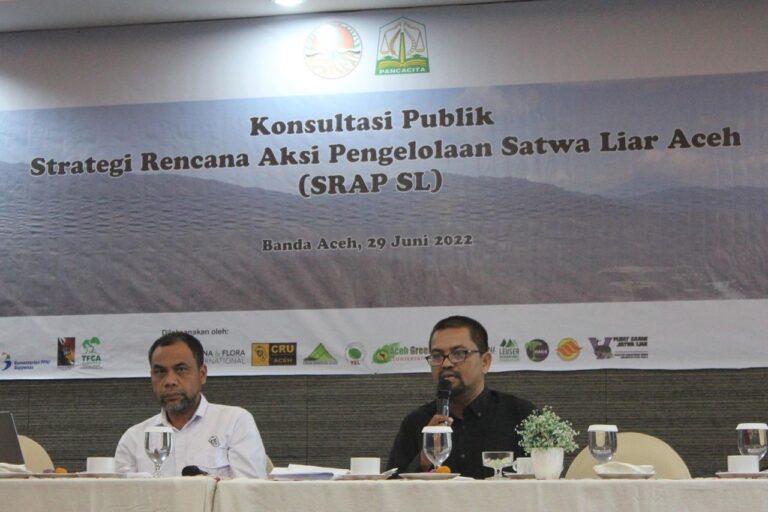BANDA ACEH, KOMPAS – The Aceh Provincial Government is strategizing a wildlife management action plan. The document will later be endorsed in a gubernatorial regulation. The action plan responds to the massive animal conflict phenomenon.
Draft Wildlife Management Action Plan Strategy document (SRAP SL)
formulated by the Aceh Environment and Forestry Agency, the Aceh Natural Resources Conservation Center, non-governmental organizations, and academics.
Muhammad Daud, Head of the Protection and Conservation of Natural Resources Division of the Aceh Environment and Forestry Service, during a public consultation on the SL SRAP on Wednesday (29/6/2022), said that the SL SRAP will be a joint guideline in dealing with animal conflicts in Aceh.
“This SL SRAP is a mandate from Qanun/Local Regulation No. 11/2019 on Wildlife Management. This draft has not been finalized, we need input from the parties before it is established as the Aceh Governor Regulation (Pergub),” said Daud, one of the drafting team.
In the Aceh SL SRAP, there are nine important points that are used as action plans. These include habitat and population issues, habitat protection and restoration, animal-human conflict control, mitigation, law enforcement, and institutional strengthening, research and innovation. Furthermore, citizen participation, mobilization
stakeholder support, and sustainable funding.
The nine key points are translated into many activities, such as conducting population surveys, restoring habitat, building a database system, routine patrols, and following up on law enforcement.
“ST Aceh’s SRAP focuses more on habitat management, not on individual animals. In Aceh, various protected animals can live in one area,” said Daud.
Qanun No. 11/2019 on Wildlife Management states that the SL SRAP must be prepared a year after the qanun is passed. Despite the two-year delay, the Aceh SL SRAP document is a good step forward in animal protection efforts.
Daud said that animal conflicts are increasingly massive and poaching has not stopped. The trigger for conflict is deforestation and degradation of forest functions. Elephant and tiger conflicts with humans are most massive.
“Forest encroachment has disrupted animal habitats. Now most protected animals are outside conservation areas,” Daud said.
The presence of Sumatran orangutans and Sumatran rhinos is only a small part in other use areas. However, in certain areas the four key species live in the same area.
“This is because Aceh still has vast forests. However, if deforestation continues, these protected animals will be increasingly threatened,” said Daud.












